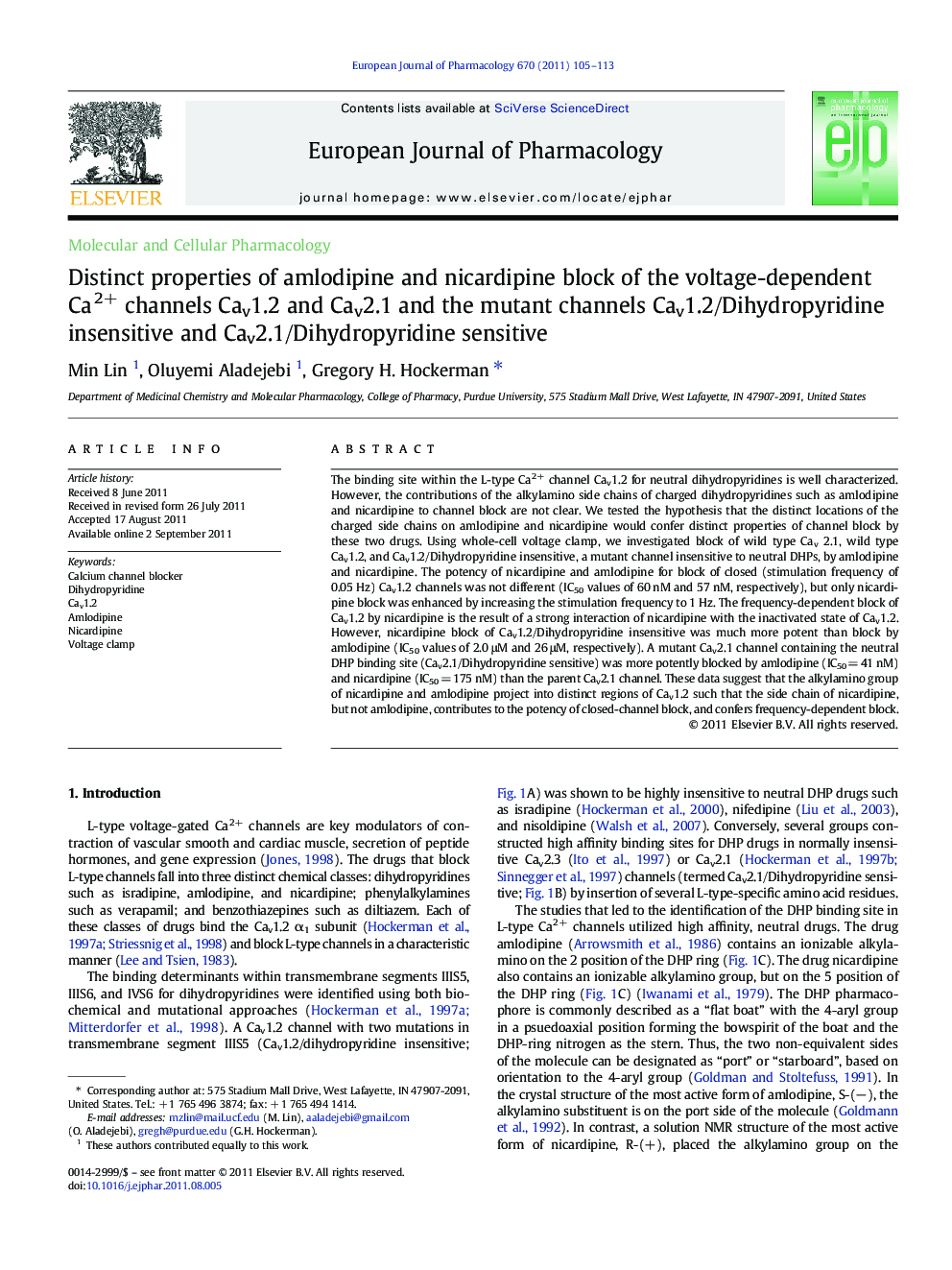| Article ID | Journal | Published Year | Pages | File Type |
|---|---|---|---|---|
| 5830204 | European Journal of Pharmacology | 2011 | 9 Pages |
The binding site within the L-type Ca2+ channel Cav1.2 for neutral dihydropyridines is well characterized. However, the contributions of the alkylamino side chains of charged dihydropyridines such as amlodipine and nicardipine to channel block are not clear. We tested the hypothesis that the distinct locations of the charged side chains on amlodipine and nicardipine would confer distinct properties of channel block by these two drugs. Using whole-cell voltage clamp, we investigated block of wild type Cav 2.1, wild type Cav1.2, and Cav1.2/Dihydropyridine insensitive, a mutant channel insensitive to neutral DHPs, by amlodipine and nicardipine. The potency of nicardipine and amlodipine for block of closed (stimulation frequency of 0.05 Hz) Cav1.2 channels was not different (IC50 values of 60 nM and 57 nM, respectively), but only nicardipine block was enhanced by increasing the stimulation frequency to 1 Hz. The frequency-dependent block of Cav1.2 by nicardipine is the result of a strong interaction of nicardipine with the inactivated state of Cav1.2. However, nicardipine block of Cav1.2/Dihydropyridine insensitive was much more potent than block by amlodipine (IC50 values of 2.0 μM and 26 μM, respectively). A mutant Cav2.1 channel containing the neutral DHP binding site (Cav2.1/Dihydropyridine sensitive) was more potently blocked by amlodipine (IC50 = 41 nM) and nicardipine (IC50 = 175 nM) than the parent Cav2.1 channel. These data suggest that the alkylamino group of nicardipine and amlodipine project into distinct regions of Cav1.2 such that the side chain of nicardipine, but not amlodipine, contributes to the potency of closed-channel block, and confers frequency-dependent block.
